




Welcome to Transgressor,
a celebration of outsider philosophies
and cultural trespassers. The following pages contain
video, audio and other interactive features. The table of contents
is the main navigation page for the issue; click or touch
the triangle icon below to return at any time.
Please tell us what you think:
feedback@transgressormagazine.com
commitmentThe Smell of Fear and ChampagneInside the Mind of Linnéa SjöbergInterview by: Åskar Brickman
Images courtesy of: Linnéa Sjöberg
actionHang the One Who Sold the RopeOn the Liberation of Creativity and Exposing Oneself in PublicWords and Images by: Igor Grubić
mediumI'll Be Your MirrorThe Unfolding Mythology of ChristeeneWords from: the Audience
Images courtesy of: Christeene Vale
travelBorderlineOn the Road with Vicky SambunarisWords and Images by: Victoria Sambunaris
resistanceUntil Every Cage is EmptyReports from the International Animal Liberation MovementActions excerpted from: Bite Back Magazine
Images by: Jules Buck Jones
historyTHIS CAN NEVER DIEThe Diaries of Hisham Sharabi, 1944-1945With an introduction by: Leyla Sharabi
Images courtesy of: the Estate of Hisham Sharabi
Maps by: Renee Fernandez
meditationA Guided Mediation(of One's Own Pains)Video by: Jonathan VanDyke
Sound by: Julianne Swartz
homageA World to Carry OnThe Importance of Bobbie Gentry, Kirsty MacColl, and Laura NyroInterviews and Images by: Jill Pangallo
With: Nath Ann Carrera, Mx Justin Vivian Bond, Patrick Johnson, and Amber Martin
presenceFire in CairoThe Berber UprisingWords and Images by: Matthew Connors
editor Diana Welch
co-editorIgor Siddiqui
copy editorKaty McElroy
publisherMorgan Coy
art directionRyan Rhodes
built byChris Bauman

Åskar Brickman is an artist from Stockholm, Sweden, currently residing in New York.
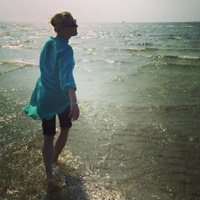
Mx Justin Vivian Bond is a writer, singer, painter, and performance artist living and working in New York City. Mx Bond is the author of the Lambda Literary Award-winning memoir TANGO: My Childhood, Backwards and in High Heels, published by The Feminist Press. V’s debut CD DENDRPOPHILE was self-released on WhimsyMusic in 2011 and was followed by SILVER WELLS in 2012. The Tony-nominated Mx Bond is a recipient of The Ethyl Eichelberger Award, The Peter Reed Foundation Grant, The Foundation for Contemporary Arts Grants to Artists Award for Performance Art/Theater, an Obie, and a Bessie.
Photo by Jill Pangallo
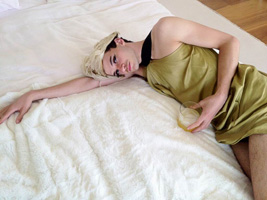
Nath Ann Carrera is a singer, musician, storyteller, and writer. Described as a "heavenly" (New York Times), "gender-defiant" (Time Out New York), "glitter saint" (Village Voice), Nath Ann has had solo shows at La MaMa ("Death To The Patriarchal Rape Heads"), Joe's Pub, Wild Project, and the Afterglow Festival, performs with Mx. Justin Vivian Bond and Amber Martin, and has sung at The Kitchen, Abrons Arts Center, Le Poisson Rouge, P.S. 122, and MoMA PS1.
"Wonderful, striking... essayistic songs about female revenge and politics." Hilton Als - The Paris Review
Photo by Jill Pangallo
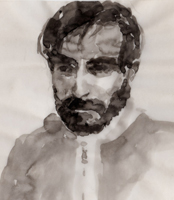
Matthew Connors is an Associate Professor in the Photography Department at the Massachusetts College of Art and Design. He received an MFA in Photography from Yale University and a BA in English Literature from the University of Chicago. His work has been exhibited internationally and can be found in the collections of the Museum of Modern Art and the Yale University Art Gallery.
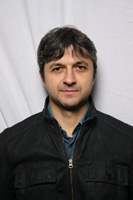
Igor Grubić’s work includes site-specific interventions in public spaces, performances, photography, and video works. He is known for his activism and consideration of public space as a means of expression. In 2000 he started working as a producer and author of documentaries, TV reportages, and socially committed commercials. His work has been presented at numerous venues internationally, including the Palais de Tokyo in Paris, the New York Public Library, the 11th Istanbul Biennial, and the Museum of Contemporary Art in Zagreb.
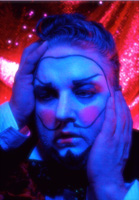
Patrick Johnson is a performer and musician, and he lives in Brooklyn, New York. He released his debut album this year, and it is called "Patty Bruce: Show Queen."
Photo by Casey Spooner
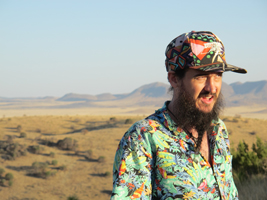
Jules Buck Jones is a practicing artist living and working in Austin, TX. Jules was born in Northampton, MA, but grew up in northern and central Virginia. He got his BFA from VCU in Richmond, VA, in 2005 and received his MFA from UT Austin in 2008. Jules has participated in residency programs in the Everglades National Park, Vermont Studio Center, and Skowhegan School for Painting and Sculpture. He shows extensively throughout Texas with solo exhibitions in Austin, Dallas, and Houston. Jules is a member of the collaborative installation group Boozefox and is president of the nonprofit project space MASS Gallery.

Amber Martin is an acclaimed NYC vocalist and comedic performance artist. Born and raised in small-town Nederland, Texas, Amber spent her teenage years winning local pageants and sashaying her “80s look” in shopping mall fashion shows. Named one of the top performers of 2010 by The New Yorker, Martin’s performances have been likened to “watching Ruth Draper after she’s come back from an acid trip during which she thought she was Janis Joplin.” Amber’s recent projects include belting out backing vocals on The Scissor Sisters (with Pharrell) hit single “Inevitable” from their Polydor Ltd. (UK) album, Magic Hour. She brought NYC Mayor Bill Di Blasio to his feet with her character portrayal of Reba. Amber continues to evolve as writer, curator, and star of her own original stage shows.
Photo by Matthu Placek
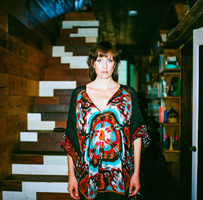
Jill Pangallo is a New York City-based artist. She has performed and shown internationally at, on and in a multitude of venues and screens including Joe’s Pub, Judson Memorial Church, Diverse Works (Houston), Bowery Ballroom, Bronx River Arts Center, Galerie Zürcher, CCA (Tel Aviv) and the MIX Film Festival. She is involved in two collaborative duos: SKOTE, with Alex P. White, and The HoHos, with Cathy Cervenka. She has received numerous awards and accolades including grants from the Idea Fund, City of Austin and Foundation for Contemporary Arts. The Austin Critics’ Table named her Texas Biennial performance Let Me Entertain You, “Best Work of Art” in 2009. In 2010 she attended the Skowhegan School, a visual arts residency in Maine. Currently, she is creating and producing a series of solo performances, acting and curating ensemble performance events.
Photo by Courtney Chavanell
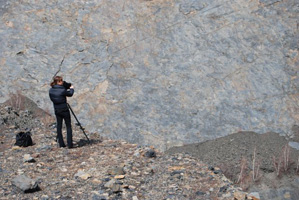
Each year, Victoria Sambunaris structures her life around a photographic journey crossing the American landscape. Her most recent project has been working in South Texas photographing the intersection of geology, industry, and culture encompassing the international boundary and energy industry. Her first monograph, titled Victoria Sambunaris: Taxonomy of a Landscape, will be released in December of 2013 by Radius Books.

Leyla Sharabi is a photo editor and photographer living in New York City.
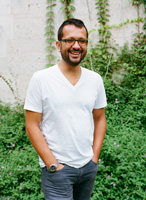
Igor Siddiqui is an architect, designer, and scholar. He is the principal of ISSSStudio and Assistant Professor at The University of Texas at Austin. He was born and raised in Communist-era Croatia (then Yugoslavia). His work has been exhibited and published internationally.
Photo by Wynn Myers
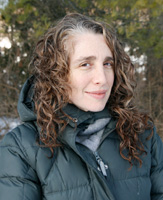
Julianne Swartz (b. 1967, Arizona) lives and works in upstate New York. Recent solo exhibitions include the Scottsdale Museum of Contemporary Art, Scottsdale, Arizona (2013); deCordova Museum and Sculpture Park, Lincoln, Massachusetts (2012); Museum of Contemporary Art, Cleveland (2011); the Jewish Museum, New York (2009); and the Indianapolis Museum of Art, Indianapolis (2008). She has produced site-specific commissions for the High Line, New York; the New Museum, New York; Tate Liverpool, Liverpool, England; the Whitney Museum, New York; PS 1 MOMA, New York; and many other venues.

Jonathan VanDyke is a visual artist based in New York City. Recent solo exhibitions have appeared at 1/9unosunove gallery in Rome, Scaramouche Gallery in New York, and the Albright Knox Art Gallery in Buffalo. His performances and installations have been featured recently at The Power Plant, Toronto; Vox Populi, Philadelphia; The National Academy Museum, New York; and as part of Performa 11, the biennial of performance art.

Interview by Åskar Brickman
Images courtesy of Linnéa Sjöberg

Fashion, as a way of communicating to others, is central in Swedish artist Linnéa Sjöberg's work. When we met for this interview, she was dressed in black sportswear and had just gotten new cornrows with a shaved part down the middle, a reversed Mohawk. But, two years ago, her look was more deceptive. As a part of the performance art project "GTD4s810,” she had covered her homemade tattoos with designer tops and pencil skirts, her hair looking like a blond Connie Chung.
For a year and a half, Linnéa presented herself as a “Career Woman"--a decision that confused many of her friends and colleagues, who were left wondering about what and who she really was. Linnéa and I first met when she moved to Stockholm to get her master's degree at the Royal Institute of Art; I saw firsthand the visual transformation she made from club kid into power creature, all efficiency and self-control, until it fell apart right before her dissertation in 2012.
Recently, I'd seen pictures of her in Berlin with young men passed out on the ground outside of the club Berghain, their bodies covered in her distinctive tattoos. I assumed that it was all part of her new project, “Salong Flyttkartong (Salon Moving Box),” in which she travels to different places and gives people tattoos. From the looks of it the day we spoke, the party in Berlin had yet to stop. So, I ordered us a round of drinks.
What follows is an edited transcript of our conversation. It has been translated from Swedish.
- Åskar Brickman

I grew up in Strömsund, in Jämtland, bordering Lapland. It’s called the highlands; it’s a high plateau flanked by mountains. I grew up in a residential area, house after house all the same. Two houses past ours the woods started, and beyond the woods were the mountains on the horizon.
There were very few people, and they keep getting fewer. When I was a teenager, there were apartment buildings where the heavy partying with moonshine and medical alcohol happened. But, they tore those buildings down because they couldn’t afford to maintain them with so few tenants; the ones remaining had to move. It’s lawns now. So I grew up in a sort of reverse progress: In the name of development, the buildings got torn down.

I was considered retarded. They wanted to put me in Special Ed. I was a sickly child and the doctors told my parents I’d never mentally mature past the age of five.
Then they said, “Well maybe a little older, but she’ll always be slow . . .”
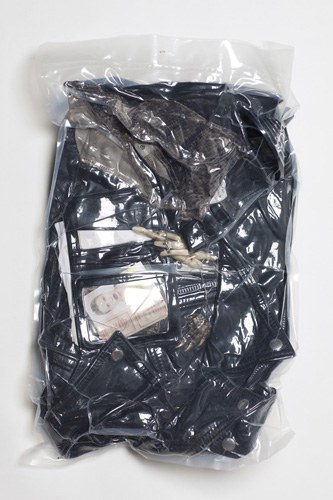
I’ve always been an exhibitionist; for a while the experiment was: “How ugly can I get?” It was about controlling the process: If I was to be an object I was going to be the ugliest object. Then came the period when I could use all the negative aspects of being a woman and all that it entails, and use it to my advantage by leveraging society’s norms. That’s how the Career Woman in “GTD4s810” was created.

“Getting Things Done” is a mindfulness self-help method licensed by David Allen in the US, who is an idiot. He promotes this way of thinking to office workers to make them act like computers that won’t glitch. Like, “Feel better about your everyday life.”
And the Satan thing was a misunderstanding. Someone wrote "fashion" in IM speak, like an abbreviation, and I thought it said Satan. "Satan! Getting things done for Satan!"

Being a good student in art school is so centered on collaborating on group projects and in workshops. The top students are the producers; they can immerse themselves in their own work while still keeping up with workshops. It reflects a lot of the networking and entrepreneurialism that society promotes. I thought it was difficult, since I’m not like that. So I became Career Woman.

Trying to become this career woman, but never actually being her, was exhausting. I couldn’t even buy coffee at 7/11; it would ruin the image of the woman I was trying to be. If it was a takeout coffee it needed to be in a white cup with a black lid.
The main part of the work was being among people I didn’t know. There’s no documentation of that, but I see it as part of the work and part of the process. It’s about people’s gaze, and being able to deceive them. I enjoyed the deception. The proof that it was working was in the looks they gave me.

Several people thought I was faking my persona before I was Career Woman. In some ways, that’s hard to hear; I have a hard time with classism and I don’t want anyone to think I come from a different background than I really do.
I was interested in identifying my complete opposite. I was interested in the power they have: to be that clean, that replicable, that kind of woman.
One professor told me that what I was doing was great because I was dressing up as other students’ mothers, the mom who comes running into the cafeteria in the morning in her pumps. People told me they got scared when they heard my heels walk down the corridors.

For my final show, I vacuum packed the old me, my wardrobe from before Career Woman. I also made silk scarves. I was inspired by Hermes and how they tell stories with their scarves; their prints communicate the history of their brand and who their customers are. They’re a good attribute for this kind of woman: Classic. Those scarf designs summed up the project. In the art world, with all its networking, it’s all the smell of fear and champagne.

In the aftermath of Career Woman, when I realized I’d never be that perfect, I was in New York on my birthday. I’d been drinking all day, running around all stressed out, I thought, “What happens if I Google ‘consulting appointment for plastic surgery, Manhattan’?”
I filled out some form and, five minutes after I hit send, they called me. I made an appointment with a plastic surgeon and explained that I wanted him to draw up the marks like he would on a patient right before a breast augmentation, to find the midline, to know where he’d make the cuts and where to place the implants. He did. Then I went home, to Brooklyn somewhere, and tattooed the markings he made.
I remember trying to find a place to get the t-shirt of the markings made in New York. I finally did it in Stockholm and that’s when I realized I had to address “Salong Flyttkartong.” It got interesting to me.

Career Woman was a restrictive role that I’d been adapting to, and it was pretty claustrophobic, so it led to a crisis of identity. I’d been tattooing myself with needle and thread all along but hadn’t shown it for a year and a half. Tattooing had become my one outlet.
I think of one-liners when I work. I like them, but I always mispronounce it. I say wine-liners. But I like those short, mantra-like sentences, so that’s how I relate to the tattoos.
In my art, I’m mostly interested in stark contrasts. When I left Career Woman and found myself in an identity crisis, there was a sense of euphoria. It was like suddenly coming back to life.

Åskar - I’m wondering how you perceive silence after growing up in the country.
Linnéa - Well I... The thing with silence… One thing I find myself doing, again, is listening to birds. We did that growing up, sitting outside silently. For whole days you can just sit and listen, like: “Oh, they’re over there now, and that one just showed up, too.”
Åskar - Did you do that when you where a kid?
Linnéa - Yes, we still do that in my family.
Åskar - I do that too, now. It came to me automatically.
Linnéa - Yeah, I know. You do start doing that.
Åskar - When you stop being annoyed with bird song, then you're like, there they are again. But I don't know the names of any of the birds.
Linnéa - I'm not very good with their names either.
Åskar - Are you interested in nature as a subject?
Linnéa - No.
Words and Images by Igor Grubić

My project 366 liberation rituals consists of a series of everyday small rituals that touch upon the problems of our society. Regardless of the fact that they may sometimes seem utopian, naive, or even pathetic, the rituals point to the basic human need to question the world around us, and the need for change.
Although the following photographs of particular actions might not seem disturbing, many of the actions themselves sparked fierce reactions when they were performed in Croatia--from shouts of approval and support to egg-throwing and real physical threats. Priests reacted, police reacted, security was called, and collaborating photographers gave up on the project. A simple question occurred to me: Why do people react so violently to those who are different and have different opinions?
When I think about an injustice in society that bothers me, emotion becomes a trigger for action. Through the act of “exposing myself” in public, I experience catharsis. I try to be consistent with myself and to clearly express what I think and feel. I also try to confront the passivity of the majority, convinced that there is always a chance to encourage at least someone to express their opinion.
Creativity liberates. If we were all more creative in what we do, I believe we would live in a happier society.
- Igor Grubić

When I was in high school, I saw a photo of a man who had shaved a star in his hair as a priest’s tonsure. I did not know who that person was or what the act meant, so I interpreted it in my own way. When I learned the true meaning of the photograph, it disappointed me at first; although I could grasp Duchamp’s intention to point to man as a comet, I preferred my youthful interpretation of the work as a proclamation of the artist’s left-wing anarchist radical attitude in the context of the period of modernism and the rising of capitalism in which he had lived.
In accordance with my first impression, I shaved my own tonsure in the shape of a star. I wore a cap, and would occasionally take off the cap and stand in silence for a while. Symbolically, I was commenting on the different processes of transition of the Croatian society from socialism to capitalism by touching upon some relevant issues: false patriotism, politicizing of the Church, the destruction of social ownership and the corruption of privatization, the increase of poverty, and art as an uncompromising battlefront.
Sjećam se kada sam kao srednjoškolac na naslovnici jedne knjige prvi put vidio fotografiju čovjeka sa obrijanim oblikom zvijezde na tjemenu (poput svećeničke tonzure): bio sam oduševljen tom idejom. Tada nisam znao tko je ta osoba i što bi taj čin trebao značiti; iščitavao sam ga na svoj način. Puno kasnije saznao sam pravo značenje tog postupka, i u prvi mah bio razočaran. Iako sam mogao shvatiti Duchampovu namjeru da ukaže kako je čovjek zvijezda-komet, ipak mi se više svidjelo moje mladalačko iščitavanje rada kao proklamiranja umjetnikovih ljevičarsko-anarhističkih radikalnih stavova u kontekstu razdoblja modernizma i uspona kapitalizma.
U skladu s prvotnim doživljajem, obrijao sam tonzuru u obliku zvijezde na svom tjemenu. Nosio sam kapu, a povremeno bih se pojavio na određenim lokacijama i, u formi malog rituala, skinuo kapu i neko vrijeme boravio u tišini. Simbolično sam na taj način komentirao različite procese tranzicije našeg društva iz socijalizma u kapitalizam, dotičući se nekih bitnih točaka: lažnog domoljublja, politizacije crkve, uništavanja društvenog vlasništva i privatizacijske pljačke, rastućeg siromaštva, umjetnosti kao beskompromisne fronte, i važnosti nastavljanja borbe unatoč tome što se radikalna promjena čini gotovo nemogućom.

Several days after New Year’s, I walked around several neighbourhoods representing different social structures--middle-class, elite, as well as barracks where homeless people live--looking for Christmas trees that had been thrown out as garbage. I put red baubles and a red star on top of the trees that I came across, suggesting a potential unity in a celebratory nostalgia for the past.
Nekoliko dana nakon proslave Nove godine, u jutarnjim satima šetao bih raznim gradskim naseljima, tražeći odbačene božićne borove. Obilazio sam naselja različitih socijalnih struktura: građanska, elitna kao i barake u kojima borave beskućnici. Na borove koje sam pronalazio stavljao bih ukrasne crvene kugle, a na vrh crvenu zvijezdu, sugerirajući neko potencijalno jedinstvo u slavljeničkoj nostalgiji za prošlim vremenima.

On the anniversary of the death of a French tourist--a homosexual beaten to death by skinheads in the centre of Zagreb--I put flower buds at the place where he had died. When I realized that there was a Second World War monument to the fallen fighters against the Nazi regime close by, I paid respect to them as well. I treated them as fighters for the freedom of all citizens, including those of different sexual orientation. I did this by putting flower buds on the hero’s chest.
Na obljetnicu smrti francuskog turista - homoseksualca kojega su na smrt pretukli skinheadsi u centru Zagreba, postavio sam cvjetne pupoljke na mjesto događaja. Kad sam shvatio da se u neposrednoj blizini nalazi i spomenik palim borcima NOB-a, koji su u Drugom svjetskom ratu poginuli od nacističke ruke, odao sam i njima počast tretirajući ih kao borce za slobodu svih građana, podrazumijevajući i prava ljudi drukčijeg seksualnog opredjeljenja. Tu počast izrazio sam tako što sam na prsa junaka postavio cvjetne pupoljke.
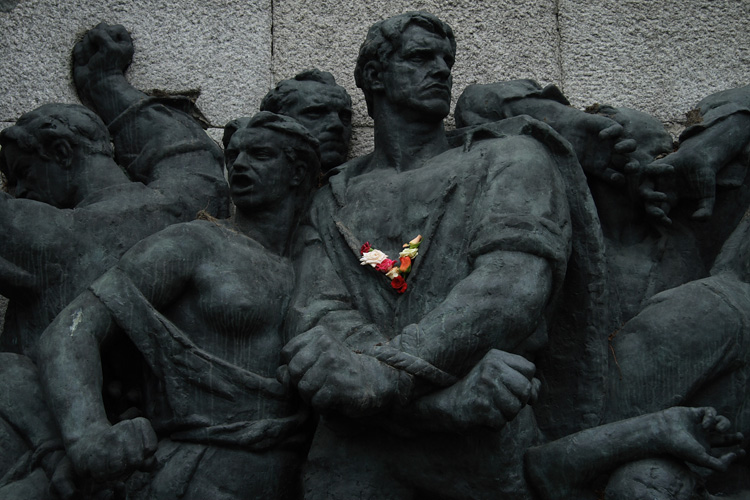
On the day of the official visit of U.S. President George W. Bush to Croatia, in front of the National Bank of Croatia at the Croatian Nobles Square (which is also the site of the International Monetary Fund offices), I coloured the water in the fountain blood red.
The action was carried out illegally, despite strong security measures and a large number of police officers monitoring the square. In addition to symbolically alluding to the blood of the victims of Bush’s international policy as well as protesting against the IMF policy, the action also served as a direct provocation to the atmosphere in the country during Bush’s visit, which ranged from the subservient cleaning of parks to welcome the American president to covering up and neutralizing any attempt of expressing criticism and resistance.
Na dan posjeta američkog predsjednika G.W.Busha Hrvatskoj, ispred Hrvatske narodne banke na Trgu hrvatskih velikana (gdje se nalazi i ured Međunarodnog monetarnog fonda) izveo sam akciju bojanja vode u fontani u crveno, simbolično ukazujući na prolivenu krv žrtava Busheve politike u svijetu, kao i na nezadovoljstvo spram rada i politike.
Akcija bojanja fontane izvedena je kao ilegalna akcija, unatoč snažnim sigurnosnim mjerama i broju policijskih djelatnika koji su nadgledali trg i kretanje građana. Akcija je također i neposredna provokacija atmosferi gotovo izvanrednog stanja u državi prilikom Busheva posjeta te regulaciji javnog prostora i ponašanja građana, u rasponu od uređivanja zelenih površina za doček američkog predsjednika do zataškavanja i neutralizacije svakog pokušaja iskazivanja kritike i otpora.

While writing graffiti in a neighbourhood where mass apartment construction was taking place, I saw traces of a worker’s hand printed all over. I was fascinated by this simple visual gesture.
In these times, which are hard for workers, I decided to leave such a handprint at the place where this problem should be discussed the most--the building of the Croatian Parliament.
Workers’ hands, although dirty, remain clean in contrast with the dirty hands of local politicians who capitalized their positions of power by corruption, distancing themselves definitively from the workers they are supposed to represent.
Izvodeći akciju s grafitima u naselju gdje se provodi masovna stanogradnja, naišao sam na električnu trafostanicu koju je radnik oslikao otiscima zamazanih ruku. Fascinirala me ta jednostavna likovna gesta.
U ova teška vremena za radnike, odlučio sam ostaviti takav otisak ruke, tamo gdje bi se tim problemom najviše trebalo baviti - na zgradu Hrvatskog sabora.
Radničke ruke, iako umazane ostaju čiste, za razliku od “prljavih” ruku ovdašnjih političara, koji su malverzacijama kapitalizirali svoje pozicije moći i definitivno se udaljili od radnika koje bi trebali zastupati.

Inspired by his well-known series “Read the poetry of . . ." (including Hölderlin, Rimbaud, Mallarmé, Trakl, Mandeljštam, Pessoa, and Celan), I asked Vlado Martek to select one poem by each of these seven--in his opinion, most relevant--poets.
I printed the selected poetry on red papers and made paper airplanes, which I then threw from the rooftop of the “Mamutica,” or the “Giant,” building--the largest and the most populated building made in the period of socialism in Zagreb.
Zamolio sam Vladu Marteka, potaknut njegovim poznatim akcijama “Čitajte pjesme” (Holderlina, Rimbauda, Mallarmea, Trakla, Mandeljštama, Pessoe, Celana) da izabere po jednu pjesmu od tih sedam (njemu najznačajnijih) pjesnika. Otisnuo sam izabranu poeziju na crvenim papirima i od njih napravio papirne avione koje sam potom bacao s krova “Mamutice” – najveće i najnastanjenije zgrade sagrađene u period socijalizma u Zagrebu.

We are witnesses to the prevailing decadence of contemporary civilization, which functions on the principle of produce, consume, and throw away. Even the danger of planet Earth’s complete destruction doesn’t move most of its citizens to change their life philosophy. We are the ones who determine how future generations will live on Earth.
Svjedočimo općoj dekadenciji suvremene civilizacije, koja funkcionira po principu “proizvodi, konzumiraj, baci!”. Čak niti opasnost od potpunog uništenja zemlje, većinu njezinih žitelja ne pokreće na promjenu životne filozofije. Od nas zavisi kako će i hoće li buduće generacije živjeti na Zemlji.

Words from the Audience
Images courtesy of Christeene Vale

It was at Camp Camp, the now-defunct queer performance night that took place in the backyard of a South Austin coffee shop, sometime in 2008. Wearing a dirty wig and a Botox baby tee under a rabbit fur coat, she basically humped the mic and moaned. Then she disappeared, reemerging fully realized a couple weeks later with her debut video smash, “Fix My Dick.”
Such were the humble beginnings of Christeene, the racially ambiguous, genderfucking, adult-baby creature who has gone on to perform for thousands around the world, from the stages of Paris Fashion Week to the mud pits of Glastonbury. Along the way, Christeene has incurred both wrath and reverence. There are those who believe that Christeene is transcendent, taking the classic drag send-up of celebrity worship to another level; others see the character as an insensitive exploitation of sex workers, an affront to people of color, and a mockery of trans folk.
Throughout all of this, Paul Soileau, the performance artist who writes and performs as Christeene, contends that she is a creature that he has called forth rather than created. He describes his participation in this act of conjuring as more of a medium than a maker and maintains a parent-like defensiveness for this being who shares his body.
The following pages contain the varying opinions of Paul and Christeene’s most vocal fans and detractors, from drag legends to random internet commenters, paired with exclusive photos and video from Christeene’s most recent European tour.
- the Editors

“Seriously!!!! Does being drag has to be so revolting? Its nt funny, saying its Vulgar is an understatement. U R Just not talented that’s all. Sorree... Christeene - Hate to say it but you make a ugly Gurl and Uglier man and the guys dancing around SHOULD NOT take their clothes off. I feel like crying…"
- VINNY C, Queerty commenter

"Christeene is political, queer, sexy, hardcore, unashamed, hilarious, real and hyper-real. She's amazing; she makes me want to dance, scream, have sex, go crazy, get reamed!"
- MARGARET CHO, comedian

"Paul Soileau, as Christeene, appropriates the imagery of many trans women of color for cheap laughs while his audience is overwhelmingly cis white hipsters and cis gay men. Personally, I think he's about one step removed from Chuck Knipp's Shirley Q. Liquor just with a little more hipster cred/thinly veiled irony to make it seem more artistic."
- GINA MORVAY, blogger at Skip the Makeup

"The Shirley Q. Liquour comparison is unthoughtful yet interesting. Unthoughtful because, as I mentioned before, the blackface reference is not even hinted at in Christeene’s performance. Interesting because in examining the kinds of discussion around Shirley Q. Liquor there may be some parallels to the ways in which cultural critics and commentators (hello all previous forty something commentators) rally to draw focus to sets of social and educational issues that deserve more attention from LGBTQIA communities. Does there need to be more consciousness-raising in regards to trans experiences and queer POC? Yes yes yes yes yes yes yes yes yes a million times yes."
- THE WARHOL EFFECT, Queerty commenter

“Beyonce on bath salts.”
- KEVIN RICHIE, NOW Magazine

"I think Christeene’s celebration of the id helps in balancing out more conservative forces.
The show is polished and refined sleaze."
- RICK OWENS, fashion designer

"Don't know if you know this, but there actually are other very talented drag queens in the entertainment world at this moment in time."
- CONNIE ASADA, Dangerous Minds commenter

"As foul as Christeene’s sleazeball anthems can get, all she’s really doing is reflecting our increasingly depraved, hypocrisy-ridden culture back at us.”
- ANDY AND JAKE, Weirdest Band in the World

"I think Christeene's rawness connects with people who are sick of content-free bullshit. You can spend a million dollars on a video for a formulaic song and make it slick but ultimately boring. It's giving the people what they want. Christeene can take $200 and create something raw, which really stirs emotions.
I don't always comprehend it, but the look, the lyrics, and the music combined make a powerful statement which does make you think. Even if it's: ‘What the fuck is this? Why would someone want to appear in this look and be so twisted?’ Well, art is supposed to make you think. And the more kinds of drag there are, the more interesting the art form of drag becomes."
- LADY BUNNY, drag legend and founder of Wigstock

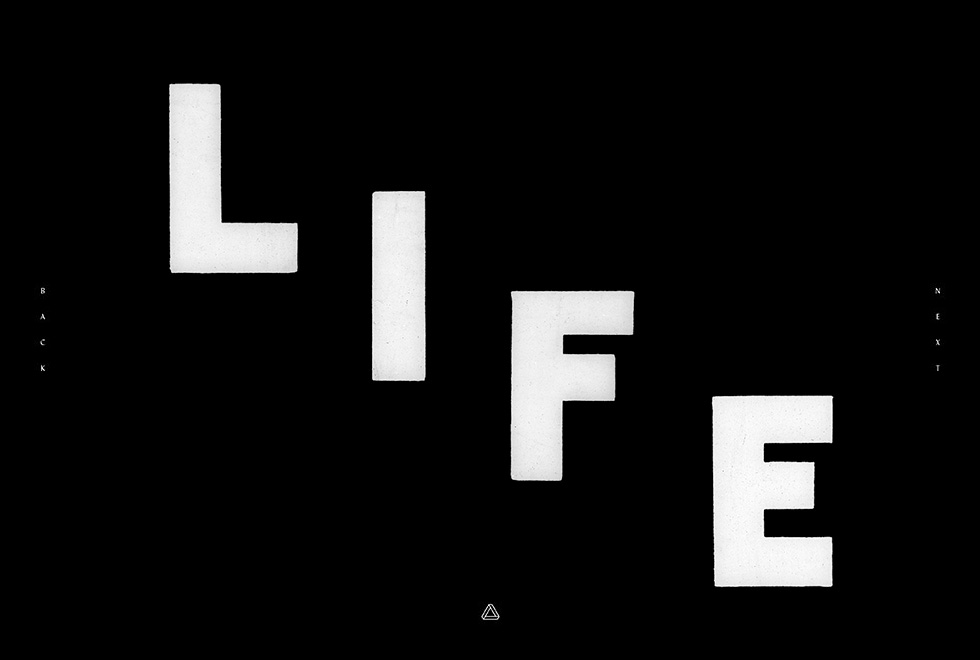
Words and Images by Victoria Sambunaris
Based in New York, landscape photographer Victoria Sambunaris organizes her life around extensive journeys on the road. Her large-scale photographs document the intersection of the natural and the manmade, poignantly capturing the impact of industry, infrastructure, and politics on the American landscape.
Since 2009, her primary focus has been the border between the United States and Mexico. She has diligently covered its 2,000-mile extent from Brownsville to San Diego, while inevitably developing personal ties to specific places along the way. Vicky’s solitary experience of working on the road is punctuated by numerous encounters with strangers, new communities, and unexpected situations that are constantly informing her perspective as an artist. The expansive landscapes framed in her photographs are sharp, sober, and objective; the circumstances that lead to the work, however, are complicated, risky, and often uncontrollable. Vicky’s stories from the border are fascinating, thrilling, and revealing of not only how she negotiates given situations as an outsider, but also of the social richness and cultural complexities embedded in the region.
Vicky spoke to us candidly about what happens when the large-format camera is away. Accompanying her words are various documents from her archive--photographs, snapshots, videos, even a recipe.
- the Editors


I shoot very, very little. I’ll go on the road for five months and come back with maybe 100 sheets of film--not very much when you think about how many pictures you can snap in a day. A lot of my time is spent looking and looking and looking and looking and going back to the same places at different times of day and scouting and sketching and figuring out the shot. That’s the way it works. The circumstances are unpredictable, so I am always waiting for a particular moment to happen.
There was a shot of a man in the middle of the Rio Grande that I wanted to redo. I went back and I found him six months later, but he had a different horse and the river was at a different level. I made an appointment with him to shoot him on a different day. I spent hours sitting out there baking in the sun, but he never showed up.
I spend a lot of time waiting for particular things to happen, like waiting for a train to pass through the landscape, but sometimes it never comes. The border patrol watches me coming back to the same place day after day, just waiting and looking and standing there, and they just have no idea what I am doing. They don’t understand why I have this huge old camera, waiting for hours on end.


Being in so many small towns, walking into a bar and sitting down, and then just letting the world happen around me--that’s how everything works, at the border or wherever I am. You take that extra step to try to meet people and eventually another world opens up.
A part of me just wants to spend my life making work about these other worlds. It’s not even that someone will get me into a place or lead me to something spectacular that drives me; it’s just the experience of being on the road that’s incredible to me. It’s the challenge of taking a photograph of the world that exists out there, and all you need to do is walk into it and be open to it.


There was one situation in the town of Columbus, New Mexico, where I was hanging out one afternoon photographing houses. Scouting. A man pulls up in a dark SUV, sunglasses on, and says, “May I help you?”
I told him I was a photographer, and it turns out that he is the town mayor. “Well, let us help you; come to my office tomorrow” he said. So, the next day his assistant took me across the border as promised. The mayor kept calling us the whole time, which was a bit unusual. The whole experience seemed somewhat strange. Six months later, I get a call from a friend asking me if I had seen on the news that the mayor had just been arrested for running weapons into Mexico.


In Eagle Pass, Texas, I came across a gun shop owned by these really cute guys. They were cool--their mother invited me over to see their house later, which I did. So I am in there, photographing the shop, kind of hanging out. A week later I get a call from someone saying, “Oh, your new friends, they were just arrested and the shop just closed down because they were selling ammunition across the border.”


I spent a couple nights on the Mexican side right on the river, in an area known for drug trafficking. The next morning the person I was with said, “You know how to use a gun, right?” He had to leave for the night, so I was going to be in the house alone.
I said, “Of course not,” so he just locked me up in the house while he was gone.

In El Paso I was with this Iranian guy dressed head-to-toe in white linen, I’ll call him B, and his cage fighter friend who was about to go into the army in two days. The cage fighter wanted to see his girlfriend in New Mexico, so we drove there at night, 100 miles per hour. We arrive at this trailer park, trailers everywhere but no addresses, dirt road, darkness. There are all these cars that are jacked up, the cars are bigger than the homes. We find the girl’s home and there is the mother, the sister, the whole family, and we are in total gang territory, which I didn’t realize until after. This beautiful girl, probably 17, walks out of the trailer. Gorgeous, tall, red hair, blue eyes--where did she come from?
So everyone’s talking, there’s a conversation happening and something suddenly goes bad. The guys that I was with rush me to get in the car--now. All of a sudden there is chaos, people screaming, running after us as we zoom out of there in B’s BMW. I never found out exactly what happened, but I could smell danger. Later, all I kept thinking was, what happens to that red-haired girl?


Although I prefer to camp, I do sometimes stay in motels. I usually do this in places with no campgrounds close by, or in towns where over the years I’ve become friends with the motel owners. Bob in Del Rio always gives me a good deal and I love staying there.
The motel culture is fascinating. It’s a lot of transience. At Bob’s motel, my neighbors are often pipe layers and oil workers attracted to the area by the industry. Bob, an extremely kind Indian man, has these BBQs almost every night. There is a table set up for everyone, plenty of Indian-spiced grilled meat and cold beer. Where else could I go to eat dinner with oil workers, drink with them and talk about what they do and who they are, and hear their life stories?
I make sure to stop in Del Rio every time I am making work at the border. I have familiarity with the place, a connection with many of the people in town, and I feel a little bit taken care of there, which feels very special. So if I were to be dropped off anywhere along the border, I’d probably choose Del Rio, Bob’s motel, and one of his BBQ dinners.
BOB’S BBQ CHICKEN TIKKA
Ingredients
2-3 lbs of boneless and skinless chicken thighs (chicken breast can also be used)
2-3 tablespoons of orange juice
1 tablespoon of cumin and coriander powder
1 spoon of chili powder
1 teaspoon of turmeric powder
1 tablespoon of garlic and ginger paste (freshly blended)
1 tablespoon of oil
Garnishes
Lemon wedges, Chat Masala, Butter

Trim the fat from the chicken. Wash and pat dry with a paper towel.
Combine ingredients and chicken in a zip lock bag. Refrigerate for a couple of hours. Red food coloring can be added to give it the red color.
The BBQ has to be at a temperature of 350-400 degrees. If using coals, make sure the coal is white hot.
BBQ the chicken, turning it a couple times. When the juices run clear, baste it with a little butter before removing it.
Squeeze some fresh lemon juice and sprinkle some chat masala and its ready to serve.
It can be eaten with Naan.
I’ve spent a total of two years on the border since 2009. The U.S.-Mexico border is huge, so there are areas along it that I’ve concentrated on more than others . . . Big Bend, El Paso, Laredo, Del Rio. Almost every town on the border I go to, I start fantasizing about staying there and disappearing. El Paso, Del Rio, Van Horn . . . I could list every town where I have had dreams of staying forever.

Actions excerpted from Bite Back Magazine
Images by Jules Buck Jones

"The Animal Liberation Front, established in Great Britain in the mid-1970s, is a loosely organized movement committed to ending the abuse and exploitation of animals. The American branch of the ALF began its operations in the late 1970s. Individuals become members of the ALF not by filing paperwork or paying dues, but simply by engaging in 'direct action' against companies or individuals who utilize animals for research or economic gain. 'Direct action' generally occurs in the form of criminal activity to cause economic loss or to destroy the victims' company operations. The ALF activists have engaged in a steadily growing campaign of illegal activity against fur companies, mink farms, restaurants, and animal research laboratories.
Estimates of damage and destruction in the United States claimed by the ALF during the past ten years, as compiled by national organizations such as the Fur Commission and the National Association for Biomedical Research (NABR), put the fur industry and medical research losses at more than 45 million dollars. The ALF is considered a terrorist group, whose purpose is to bring about social and political change through the use of force and violence."
- James F. Jarboe, Domestic Terrorism Section Chief, Counterterrorism Division, Federal Bureau of Investigation, February 12, 2002
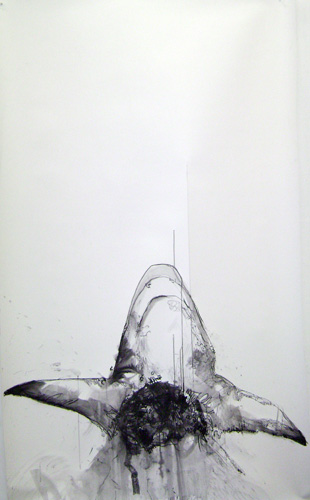
February 27, 2013 - Philippines
The cage of a grass owl in the small zoo on Boracay, Philippines, was opened in the middle of the day while the zoo was open and security was present; activists didn't have a chance to free other animals.
The small zoo situated on Mountain Luho, the highest and most popular viewpoint in Boracay, provides horrible conditions to animals. Cages are narrow and dirty; people visiting the place use flash when they make photos, pointing cameras into animals' faces. Some animals are depressed. For example: A wildcat ate its own tail.
Last year, a giant crab was stolen from the restaurant on the beach of Boracay. After his claws were released from plastic ropes, which are used to make crabs helpless, he (or she) was put to the sea and went away slowly moving in crystal clean waters. We never saw a greater picture.
These corpses and live animals awaiting their miserable death can be seen on the beach day after day in front of thousands of passersby, including children.
- FAC (Flying Apes Clan)

May 7, 2013 - United Kingdom
In the early hours of Tuesday morning, 17 lambs were liberated by the ALF in southwest UK, just days before they were destined to be murdered for halal meat. They are already in loving, happy places around the country living their lives as they should. This is one reason why the ALF exists and always will.
- ALF (Animal Liberation Front)

May 10, 2013 - Argentina
Late in the night, in the City of Bariloche (Río Negro province), a truck belonging to the municipal dog pound was completely destroyed. The truck was used to capture street dogs and transport them to kennels where they are killed. Police believe the fire was intentionally set.
- Anonymous

June 2, 2013 - Sri Lanka
Seven caged parrots liberated in Sri Lanka. It was from my first salary. I bought them from a pet seller and those were only he had. He was doing it as a one-day business. I released the birds at the very first moment I bought them; they looked hungry and so uncomfortable inside the cages.
Before I bought them, I saw something guilty on seller’s face and when I was releasing them I saw a little smile on his face. His two other companions were also joining me for the release. The birds flew towards the same direction where there were lots of trees.
- Anonymous

July 23, 2013 - Ukraine
Two dolphins were set free from Yevpatoria dolphinarium as a result of special operation with diving equipment.
During the night of the full moon on 20/07/2013, we covered 2km underwater and breached the security perimeter; we cut the nets and entered dolphin containment pools. In the next hour, we cut a large part of perimeter barrier. Dolphins encouraged our efforts with clicks and whistling. Their support filled us with joy and excitement. This has been an unforgettable meeting and encouraging experience for us. Our job done, we left the area of operation.
By the way, the prison was equipped with night-vision cameras, but their red eyes were turned on the catwalks and audience seats. Nobody expected our approach from below. As soon as dolphins got wind of freedom and open water, they escaped into the night sea.
- ALF/FAI SEALS on tour

August 12, 2013 - Canada
In response to the article in the National Post glorifying Eugene Klein and his disgusting business, Capilano Furs and Taxidermy Studios, the Animal Liberation Front took direct action to destroy the interior of Eugene’s $60,000 truck. Under the cover of darkness, we approached the residence of Eugene Klein and shot syringes filled with a foul smelling liquid through the rubber sealing and into his truck.
A message to Eugene Klein: Eugene, as you and your wife Edith enter the last years of your pathetic, miserable life, you will watch an industry you helped build crumble to the ground. You were quoted in the newspaper after the last time the ALF visited your house as saying you had guns and were not afraid of us. Well, Eugene, we are clearly not afraid of you, either, and you will have to kill us to stop us.
The Animal Liberation Front is always watching. We dare you and your wife to go away on vacation.
Until every cage is empty,
The Animal Liberation Front

With an introduction by Leyla Sharabi
Images courtesy of the Estate of Hisham Sharabi
Maps by Renee Fernandez

When I was young, my dad told me not to believe everything written in newspapers. He said that people in government sometimes don't tell the truth. Once, he pointed to our bookshelf and said that books were the most important things in life. Years later, he revealed to me that, had it not been for the loss of his homeland, he would have pursued a career of pure intellectual inquiry. As it turned out, he tirelessly dedicated his mind and spirit--through articles, books, conferences and media--to providing an oft relied upon, much loved, frank, and incisive voice for the Middle East and the world.
Hisham Sharabi was born in Jaffa, an ancient Mediterranean port city that is today located in the State of Israel. In 1927, the year of his birth, Jaffa was located within the British Mandate of Palestine. Part of the Covenant of the League of Nations--founded by the Allied Powers after World War I--the mandate system was established to prepare territories recently conquered by the Allied forces for self-government, including lands of the defeated Ottoman Empire, which encompassed most of the Middle East by the first half of the 16th century.
By the time of Israel's establishment in 1948, the Israeli army had captured Jaffa and the majority of its Arab inhabitants had fled or been expelled. My father, who was just under halfway to earning a master’s degree in philosophy at the University of Chicago, channeled his pain and loss by accelerating the pace of his degree with the aim of returning to Beirut to devote himself to the cultural arm of the Syrian Social Nationalist Party. He did not, however, return to Jaffa until 1993, when he travelled to Israel and the Palestinian territories of the West Bank and Gaza to film “My Homeland, Your Homeland,” a documentary aired on BBC’s Assignment featuring my father and Israeli novelist Amos Oz.
The following pages contain a selection of my father's journal entries from 1944-1945, when he was 17 and 18 and a student of philosophy at the American University of Beirut in Lebanon. An aspiring writer at the time, he was a devotee of Lebanese writers and poets Mikhail Naimy, his first intellectual mentor, and Khalil Gibran. Not long after these words were written, my dad disavowed the mystical spiritual elements present in his thought at the time. In addition to his academic pursuits, he devoted much of the remainder of his life to writing and working for the Palestinian people.
- Leyla Sharabi

December 11, 1944
There must be a god; a power, a thing indescribable; give it any name; it is there, one, unchangeable. I don’t like to call this power, this thing, God because this word carries with it an endless line of prejudices and superstition. Yet, there he is, my god. My god is the truth, and the beauty that truth implies. My whole life, I think, will be to seek god, truth and its beauty. I will seek truth and beauty by complying with the true and beautiful in human nature; there I shall find the fulfillment of my soul.

December 12, 1944
As I grow from day to day I feel the insubstantiality of the grounds on which my whole life is based. Like a leaf I live in this environment of peace and human drowsiness; a leaf fallen from its tree driven by the winds in the air from place to place.
Things loom dimly in me as I react to certain influences now, things that seem rather strange and not quite tangible to my environmentally entangled mind. But there rests in me, as my thoughts fly into those regions of work and inspiration, a queer sensation of belief and confidence, a belief in the truth of my thoughts, and a confidence in my possible attainment of that truth now that I am conscious of it.
However, there are flying sensations that flash across my dimmed life, like far off meteors that flash across a dark and endless sky, only between now and then. I hope with all my heart that I dwell on these thoughts more and more . . . they will crystallize as time moves on, and crystallizing, form the beliefs on which my life will be pivoted.

December 13, 1944
If I am to master my behavior and habits of thought, I should work deeper than superficial action in daily manners. There is something deeper to that, deep in the character rooted in the nature of man. To me it is a matter of radical reform--intellectual reform--which will touch on the basis of character.

December 19, 1944
I can’t write with a free hand because I don’t have hope now; hopeless in my weakness and our futility.
What are we as a people? And what are we as individuals? They die in order to gain life, but we here die in our very living from day to day. Oh, the days are weary of our dangling to life. What do I stand for now?
I am hopeless now, hopeless in the utter defeat of my weakness. I look around for something to hold to, but what do I find . . . nothing, except hopelessness and weakness.
What are my higher ideals at this moment? What will my life stand for? I, I this poor individual I am looking into now is a hopeless figure--I don’t belong to anywhere. And when there is no hope, there is no life; but still I live, and look forward to live. Yes, I shall live in spite of my weakness, in spite of the whole hopelessness of our present situation, I shall live in spite of everything . . . There is a light that never flutters in life; it either shines out and dissipates the darkness of my life, or dies out and hurls me back into the darkness from which I came . . .

January 7, 1945
My mind is much clearer now to a question which has been of much concern to me lately: As an individual on what do I stand morally and spiritually, + as a nation . . . what are our foundations?
The foundations of my nation (and my individual foundation) are the legacy of the ideals of my people (and kind) embodied in the distinguished personalities that built up history. These personalities are my sources of strength as an individual, and are our sources of strength as a nation. They form the ideals and inspiration of a whole people concentrated and crystallized in one strong, concrete body.
From these personalities I will derive strength to meet the troubles and temptations of the present and future. In the light of them, I will meet life and understand it.

January 8, evening, 1945
There is a great reason for me to live and death is not the end of everything. I will live to fight through for the things that are in themselves greater than passing lives. We live and in our being is the duty to aspire for the true. My love, which is the essence of my life, (and which I am just being exposed to the shining light of which) I will spend in service to my people and my country, so that we might take our place in the procession of the nations of the world to build up the mansion of Man’s Greatest aspirations for the future world of God . . .

March 1, 1945
I terribly realize now that I must leave this atmosphere in which I am living at least for a couple of years. I am afraid not only to be distorted by the distorted constitution of the social body I am in but also I am afraid to lose that necessary nourishment for the making up of my character. My whole life-view here is confined that I am in constant danger to mature mentally in such a difficult atmosphere. What I undoubtedly need to take off this unbearable burden of mental and social prejudices both in my personal thinking and outward behavior is to live in a new atmosphere; in a place where life is fresh and vigorous, where the stream of the mind is never still, but always flowing for the construction of the better. What I need is to meet people who live and die by and for what they believe, who look on life from a definitive world-view. I am tired of the stagnancy which I feel everywhere here--even in my very life. I want to go away and get my stagnant self turned into a never resting torrent that will enfold and drive everything in its way. I want to go away. I must go away to change these my dead leaves of mind into green and lively thoughts to come back again and work again and aspire and live to a goal.

March 18, 1945
Evil can never overtake me. I can never be “bad.” I am human, and I am weak, but, above all, I have a part of the divine in me. I lost faith in myself over and over again but time after another I regained it. I am strong now; my spirit is rich with faith and love. I know that I’ll pass through pits of weakness, and though I am overpowered to deny it, I’ll fall again in spells of despair and defeat. I will try again and again, and I will never give up because I cannot give up.
I am so wide, so limitless, that I cannot engulf myself. I am lost in the endless space that my spirit stretches itself into. I am conscious of great powers in me, great reservoirs of hope and faith in things that I cannot put into words because they are beyond me.
The world is crazy now; it’s on fire. Man is struggling with himself and individuals are waging war unparalleled in our history. I don’t care whether those in this fight are right or wrong, whether they give their lives for convictions that are worthwhile. I am concerned with their fight. This fight, the world’s fight, is a purge, a painful purge of both body and spirit. I am not blind of the deceit, the treachery, the weakness, the triviality, the dirt, and the meanness of this fighting humanity--above this all. Above this burning fire of madness tower the courage, the cleanliness, the beauty, the truthfulness, the common faith of a suffering humanity. This is what is true and lasting of the human race. This can never die.






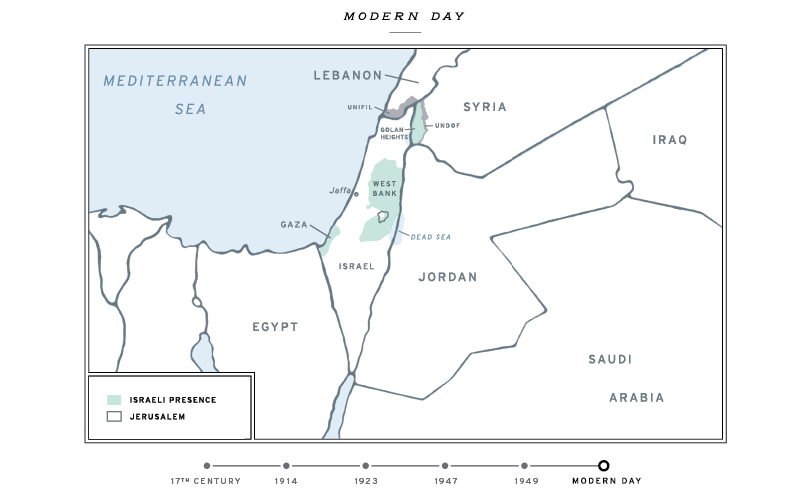
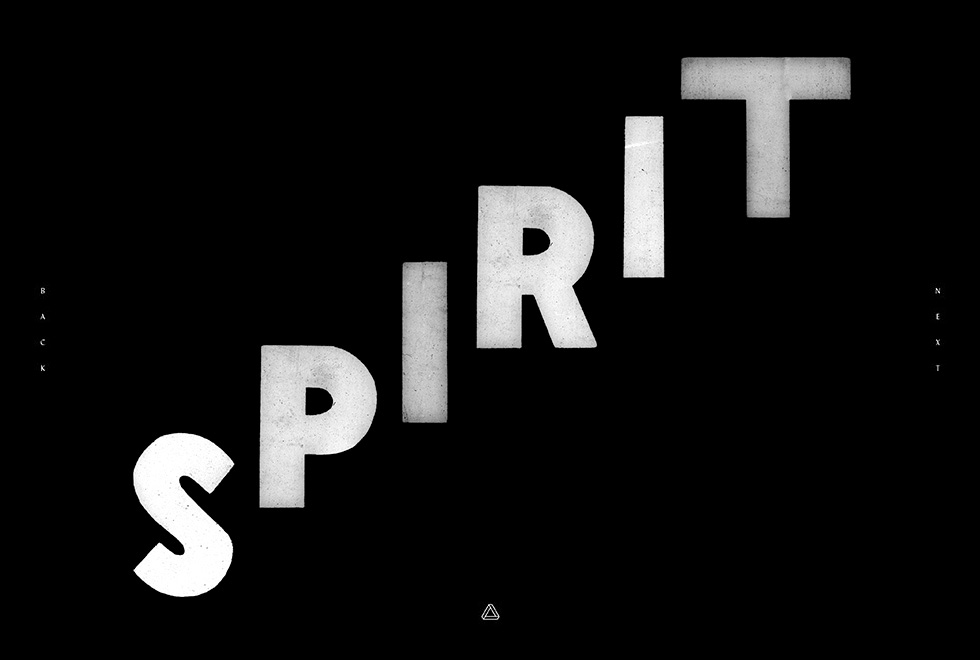
Video by Jonathan VanDyke
Sound by Julianne Swartz
In Renaissance painting, Saint Roche lifts his garment to reveal a brawny thigh, wounded and dripping; an aging Job looks skyward, his body covered with spots; a monk signals endurance with his outstretched hands. Everywhere there are Christs with blood spurting from pierced flesh, red drips and streams collected by angels and onlookers in large cups. In Tibetan thangkas wrathful dieties, ringed with fire and smoke, wear necklaces of skulls, yield scepters, and brandish holy objects with their many arms, leveling obstacles.
To meditate upon these images is to offer a mediation of one's own pains.
Interviews and Images by Jill Pangallo
With Nath Ann Carrera, Mx Justin Vivian Bond, Patrick Johnson, and Amber Martin
This past September, I found myself in Provincetown, Massachusetts, as part of the Afterglow Festival, in which “both renowned and under-the-radar innovative stage artists evolving the world of live performance” present shows and get to hang out with each other. When not onstage, I spent the week biking around with my friends and peers, three of whom I asked to embark on a collaborative project with me for this magazine: reflect, channel, and celebrate a personally influential singer/songwriter whose talent and unique contributions you feel have been largely unacknowledged by the public.
The artists these performers selected have inspired and touched each one of them deeply. Hints can be seen in their own work: Nath Ann Carerra’s onstage storytelling and Bobbie Gentry’s narrative lyrics share an undeniable connection; Patrick Johnson possesses a love and talent for harmonizing, something for which industry insiders relied on Kirsty MacColl; and Amber Martin’s ability to effortlessly channel emotionally charged characters similar to those Laura Nyro sang about made them a natural pairing.
But what truly connects all six of these artists is that they are each fiercely true to their own vision. These are the type of artists who I suspect would crumble into a pile of nothing if they didn’t make exactly what they make in the way they make it, often against the grain and in defiance of mainstream dictates. I’ve always been drawn to this kind of artist. I can smell it on them and when I do, I feel excited because I know I’ve found a kindred (and often tortured) soul.
- Jill Pangallo
Bobbie Gentry created seven albums between 1967 and 1971, writing and producing detailed psychological and philosophical character studies. She wrote songs that were multi-level Southern Gothic odes to DDT, lycanthropy, pendulums, suicidal indifference, and personal freedom as well as studies of the critical reactions of a patron responding to the capitalist Christian rhetoric of a casket dealer. She wrote about cruising a female stripper named Belinda in Corpus Christi who told her, “You may know my body, but you cannot know my mind.” She go-go danced on cellophane waters in television studio bayous, side-shuffled past two-dimensional psychedelic shacks and brothels railing against moralistic sexual hypocrisy in feminist liberation narratives, and wrote and designed the entirety of her Las Vegas shows in which she sang with genderfuck dancers in matching dresses. She then orchestrated a successful self-disappearance for more than 30 years.





Kirsty found ways to comment on herself and the world around her that transcended the cliché, the easy, and the typical. Known for singing all of her own harmonies, multi-tracking dozens of takes, she created an intricate, pitch-perfect choir out of her own high, floaty voice. Her vocals are immediately identifiable on songs by The Smiths and the Talking Heads, but it is a thing of wonder to hear that dense, lush wall of voices cradling her own lead vocal on her albums. Awe-inspiring.
Her first single was a novel take on the soap-operatics of a 60s girl group, released in the midst of 70s post-punk and New Wave guitar angst; subsequent singles tackled country and music hall. Cancelled contracts and unreleased albums were the result of record labels that didn’t know how to market an opinionated and zaftig girl singer, but this allowed her to stay independent and keep writing, keep working, keep making opportunities to get her songs out there.
She didn’t like to be photographed, she didn’t care to be recognized, and she suffered from a stage fright that made the studio her comfort zone. She was no vapid pop starlet, where the trappings of fame were the goal and the music was merely a disposable means to an end; her work was what was important. And while everybody in the industry knew her phenomenal talent, her inimitable voice, the general public did not. Aside from a few hits in the UK she never saw her work be rewarded with the acclaim it deserved, and she remained a beloved cult figure until her tragic death at the age of 41.


To me, Laura embodies feminine passion, anger, wit, and truth. She was writing and composing powerful songs about the spiritual poverty and physical dependency on hard drugs she saw on the NYC streets during a time when most writers were caught up in the psychedelic prisms and flowers of the 60s. Her wisdom--for a young, Bronx-raised woman in the late 1960s--is unparalleled. One of her earliest songs, for example, is “And When I Die.” She penned it at 16 years of age. It was so stunning and even artful in its honest openness about mortality. “And when I die / and when I’m gone / there’ll be one child born / and a world to carry on” gave us faith in the future. Something to look forward to in dying, which is inevitable indeed.



Words and Images by Matthew Connors

In early 2013, the photographer Matthew Connors spent several months in Cairo attempting to make visual sense of the political upheaval there. His time in the country coincided with two distinct phases of ongoing revolutionary activity: the second anniversary of the January 25 Revolution and the June 30 Tamarod campaign to oust President Morsi. Both were tense moments in Egypt's rapidly unfolding history, marked by large-scale demonstrations, street clashes, a palpable security vacuum, and the specter of economic collapse.
Rather than producing newsworthy images, Matthew gravitated to the visual, sculptural, and atmospheric residues of resistance that emerged from the turmoil. He also made a few hundred portraits of Egyptians he met at demonstrations from across the political spectrum: members of the National Salvation Front, Black Bloc, April 6 Movement, Ultras, Tamarod, Muslim Brotherhood, and MOI as well as many protesters who didn't identify with a specific faction.
What follows is a selection of these photographs, accompanied by a piece of short fiction inspired by his experiences.
- the Editors

We defended the city as best we could. The enemy's rocks came in waves and their clubs clattered on metal barriers in deafening, syncopated roars. There were torched palm trees along Midan Simon Bolivar where the epauletted revolutionary watched dispassionately from his stone perch. Across the street, large sheets of marble facade had been torn from the Intercontinental and smashed for weaponry. Our senses were consumed in confusion. On the small balcony that shielded our intimacies, I asked her if she could be happy here. It had been a cold spring, but the mosquitos still came for us at night. She didn't answer. We sat amongst neglected items: salvaged records, moldered sushi, cracked chairs, a book of ingenious mechanical devices, court documents, two stray cats, the everydayness of resistance.

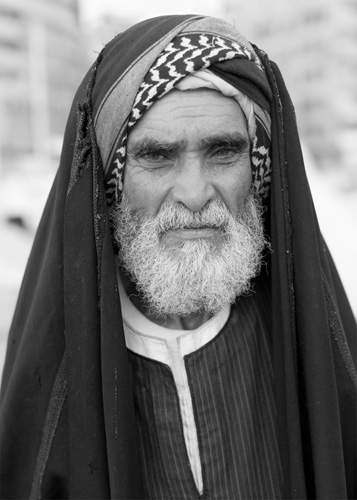
Armed patrols in riot gear guarded the interior. We built concrete cube walls around the tallest buildings so we would not be surprised from any direction. The rebels routinely set our barricades on fire, but we responded from above with imported tear gas and some rocks of our own. They were making paintings in the square to discredit us again.
"Why are we fighting them?" I asked.
"They're mad. We're sane," Sherif replied.
"But don't they also consider themselves sane?"
"I think they know. Deep down. They fight more fiercely in order to deny what they know not to be true. They are not sane."


Masked men in tight, cheap clothes marched on our position with ugly cudgels and gasoline bombs. They had been holding vigil all night in the old stadium singing chants and shaking their hands to get in the mood. Some fired wildly at us with homemade bearing guns and attempted to blind us with lasers. The Brigadier General ordered us to hold the sector while Sherif fired sniper rounds from the upper floor of a building designed by Edward Matasek. He targeted known transcendentalists, firing efficient shots deep into their chest cavities. I decided I knew nothing. The rebels pulled back to the river in a feigned retreat and hastily reinforced their battalion with cabdrivers and potato vendors. They returned with lacerated photographs of the President's face. This force was crushed by late afternoon on a day that began with a quiet meal of soft cheese wrapped in white bread.


This is the spot on the balcony where Shady used to give us haircuts at night. He worked deliberately under incandescent lamps, moving his hands in unpredictable rhythms. Afterward, he hosed the clippings off our bodies until they swirled in cold puddles with invincible glitter from another time. Those days we could still hoard duty free. Strangers stumbled out of threesomes into awkward conversations and danced recklessly with frustrated non-governmentals. I sat there getting drunker and drunker, measuring my love. She watched me closely, keeping meticulous notes on all the defects between us. Contingency angered her. I responded with some random vile things, not only because she expected me to but also because I enjoyed it.

Phalanxes of bareheaded women entered the scene and the situation became liquid. People were running through the square, scattered by something tragic and sudden. Fires flashed from makeshift blowtorches and the crowd dissolved into a viscous mass of red and black. Flare smoke enveloped the street in a white fog cutting off our visibility. We were low on gas and tonic water, and our credit rating had been downgraded again. There was nothing to do but hold our positions and monitor the ground as best we could. I had just learned from messages flown in by Eurasian coots that today had been declared the Friday of Human Dignity. I decided I knew nothing. State television footage later revealed herds of fat men clambering toward soundless ululations to save and destroy the center that bound them into a rushing, seamless whole.


And do you remember the time we spent in the Valley of the Whales? After several weeks of heavy dreams we drove straight into the desert. The wind coursed beautifully through your hair and was so strong I had to kneel underneath the prayer mat to light the fire for tea. We sat for hours on the cliff watching dark cloud shadows drift across the soft desert basin until the evening coldness seeped into your bones. Even then I could not guarantee your safety after dark.

We interrogated the captured rebel from Tanta in the security camp on the outskirts of the city. He had a friendly disposition so I related a little of the history of torture, reviewing the recent scholarship and directing his attention to patches of dried brown liquid on the floor where flies continued to gather. I leafed past diagrams of hanging techniques and virginity tests administered by truncheons to the more modern methods - American, Russian, Chinese - that could be applied in advanced situations. Sherif made a show of transcribing the rebel's hurried and exaggerated reports before we destroyed the documents and turned our attention to the children. Three days later the hospital accepted his naked body and relayed the tragic news of a car accident to his family.


Of all the calls to prayer, the neighbor's dogs made the most impassioned contributions to the dhuhr before lunch. We sat in silence through the crackling sermons eating bowls of dry cereal and basil sandwiches. If the mood struck, I would give brief lectures on the Casimir effect, the impurity of signals, or the multivariable calculus of tits and tats. But she had little patience for phenomenon that worked in practice, but not in theory. Her attention drifted to an ancient instrument exacting discrete violence on its bronze keys.
"Is that Sulendro?"
"No, Sudamala," she said. "I play it at certain times, when I am sad, or happy, although it requires four hands."
"How is that managed?"
"I expand the tones"

At night I walked among them in fragile anonymity searching for the Father of the Rebels. On uprooted sidewalks, I melted into downtown crowds under the suspicious gazes of provocatively posed mannequins in crotchless panties. My thoughts returned to her inanimate back. Merchants had transformed the streets radiating from the square into markets for cheap wares made in collapsing factories. Not even the cabdrivers could argue their way through. Agents with gelled hair and short knives circulated through the district on Chinese motorcycles confiscating communication equipment from foreign collaborators and taunting the men who returned from Jihad deranged.

Sources from inside the resistance had directed my attention across the river. The island was a vestige of colonial times offering some refuge from the city's wafting miasma of open sewers and crippled kittens feeding on discarded organ meat. Tourists came here to play out their oriental fantasies and drink black market liquids with aging bon vivants who sought shelter from puritanical sandstorms. Discrete bars along the riverfront offered small windows onto a sensual past where one could find momentary reasons to be cheerful. I sat there getting drunker and drunker surrounded by men who made small fortunes repairing the hymens of veiled women and smuggling fast food through border tunnels. We felt no urgency to rebel against the confines of our lives.


Untranslated news stories cycled through a pixelated grid on a corner television. The Court of Cassation annulled the constitutional referendum, a weapons cache was uncovered in an antique clock store on Al Sad Al Aali, another employee of the Electricity Ministry self immolated, a state of emergency had been declared in the delta region, the barricades were holding. Then it was learned the President had made another urgent speech speaking of situations, insisting on meaning. He had lost control of the Islamists. Men in starched white tunics peered through the bar window rousing the sleepy matron into a half hearted tirade against the suppression of the immorals. She threatened to display the pubic hair she had shaven into the shape of a cleric's beard, but soon settled back into her ancestral post, silently smoking next to the register.


And we can never wrap our hands together in the same way again, however much we may wish to hold or clasp or cradle the brilliant body and its fermenting distempers. He came for me after curfew on Rejection Friday wearing a surgical mask. When I resisted, he tore off my shirt. After I resisted some more, he tore off my pants and underpants. He kept telling me to stand up and I responded with my injuries. We grappled and he flipped me over the bannister, crashing downstairs into another situation.


The rebels smashed our defenses on three sides prompting the armed forces spokesperson to issue a destruction alert. Sirens sounded in all the metro stations and noise accumulated in the square. We killed a great many of them from helicopters, reducing their terror camps to fields of fire, but many more came from all dispositions to taste history. The President's last known orders were to flood the tunnels and burn the petitions. A provisional government was established and had us detained in aging municipal buildings while they adjudicated the bureaucracy of retribution. They spoke to me softly in a yellow room. I removed my belt and shoelaces searching the wild eyes of children for the prospect of silence.

No. 4
Coming Spring
2014